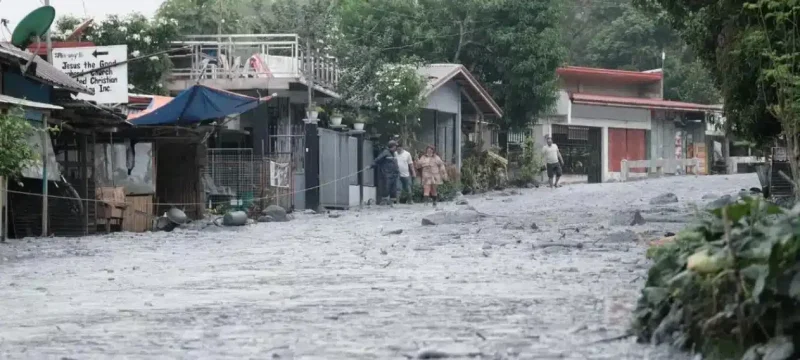Just two days after a powerful eruption rattled Kanlaon volcano, triggering mass evacuations, heavy rains lashed Negros Occidental province, unleashing a significant lahar flow in Biaknabato village. The volatile combination of volcanic mud and debris cascaded down a watercourse, inundating streets and causing widespread disruption.
Mount Kanlaon, situated on Negros island, erupted on Monday evening, spewing ash, rocks, and gases up to five kilometers into the sky. The aftermath of this eruption was felt on June 5, as heavy rains precipitated the movement of cold lava, commonly known as lahar, down the slopes of the volcano.
Read more: Punjab on high alert due to warnings of heavy rains
Images circulating on social media platforms, verified by AFP, depict a torrent of gray mud and rocks engulfing Biak-na-bato village, leaving residents navigating knee-deep sludge on the streets. Stills Fernandez of the municipal disaster agency described the situation, stating, “The lahar on the streets is knee-deep.”
Efforts to clear the affected areas proved challenging, with a bulldozer and three dump trucks deployed to remove the debris. However, authorities cautioned that the process “might take time” due to the volume of material.
Thankfully, there were no immediate reports of casualties, but the potential danger posed by lahars remains significant. Teresito Bacolcol, director of the Philippine Institute of Volcanology and Seismology, emphasized the hazards associated with volcanic debris, warning the public of its dangers.
Leah Martinez, a resident of Masulog village, captured the harrowing scene as volcanic debris surged down a rocky watercourse near her home. Recounting the experience, Martinez described hearing a thunder-like sound before witnessing the flow of stones, ashes, and water.
As the region grapples with the aftermath of the lahar flow, hundreds of people remain evacuated from their homes around Mount Kanlaon, amid continued threats of further eruptions and lahars. The state volcanology agency has raised the alert level for the volcano, indicating the possibility of more explosive activity.
The Philippines, located within the seismically active Pacific “Ring of Fire,” is no stranger to volcanic eruptions. Kanlaon is among the 24 active volcanoes dotting the archipelago nation, serving as a stark reminder of the inherent geological risks faced by communities in the region.







